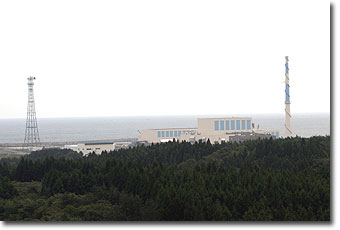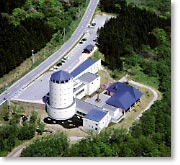Higashidori Nuclear Power Station
Aomori Prefecture
A Profile of the Nuclear Power Station
The Higashidori Nuclear Power Station is located in Higashidori-mura, looking out onto the Pacific Ocean, on the eastern side of the Shimokita Peninsula in Aomori Prefecture. The site area is about 3,580,000sq. meters. The Unit 1 is a boiling water reactor with the output of 1,100 MW. This nuclear power station consists mainly of a reactor building, a turbine building, a service building, and a seawater heat exchanger building. Higashidori Nuclear Power Station started construction in December, 1998 and started commercial operation in December, 2005.
Unit No. Capacity(MW) Reactor
TypeCommercial
OperationMain
Contractor1 1100 BWR Dec.2005 Toshiba
Features
Main Features of the Higashidori Nuclear Power Station Unit 1
Higashidori Unit 1 adopted BWR5, a tried and trusted design for many years, and largely follows a successful design pattern set by the Onagawa Unit 3 (Tohoku EPCO's another nuclear asset).
Design characteristics underpinning the Higashidori Unit 1 are an advanced Mark-I reactor vessel and seawater-based heat exchanger building, among others.
-Advanced Mark-I reactor vessel-
With its bell shape, an enhanced Mark-I reactor vessel allows greater maneuverability for inspection and maintenance than a conventional conical flask-shaped Mark-I vessel does. This design improves efficiency of intra-vessel activity as experienced with the Onagawa Unit 3.
-Detached structure for seawater-based heat exchanger-
A building, separated and apart from the reactor containment structure, is dedicated specifically for housing the heat exchange system based on seawater to provide primary coolant for the plant. This design shortens the total length of the seawater pipes, cutting down on the time and effort spent on anti-corrosion and other maintenance activities, as with the case of the Onagawa Unit 3.
-Condensed water storage incorporated into the containment structure-
To utilize the space otherwise occupied by the seawater pipes, the reactor containment building now houses a condensed water storage tank, following the Onagawa pattern.
-100-percent steam bypassing mechanism-
A 100-percent bypass system can divert all the main steam to a condenser in the event of electrical or mechanical failure of non-critical nature, in order to avoid an automatic shutdown. Once the fault has been corrected, the bypass system restores in no time the normal steam flow to turbines to generate electricity.
-Tontu Village (PR Facilities)-
Tontu Village was opened in October 1999. Operated jointly with Tokyo Electric Power Co., this village is dedicated to promoting the intercommunication of man and nature. The village consists of facilities where visitors can learn about harmony between energy development and nature in the natural environment of the Higashidori-mura rural community.
Locality
The Higashidori Nuclear Power Station is sited in Higashidori-mura, facing the Pacific Ocean, on the eastern side of the Shimokita Peninsula in Aomori Prefecture. To the north of Higashidori-mura is Cape Shiriyazaki on the northeastern tip of the main island of Japan. This cape is a part of the Shimokita Peninsula National Park. It commands a fine view of a white lighthouse, a green grassy plain and a blue expanse of ocean. On the Pacific side of Higashidori-mura are as many as twenty-four lakes and marshes formed by the natural damming by dune sand. These lakes and marshes form one of the most important wildlife habitats in Japan. Lake Sakyo, among others, is well known as a habitat for small green algae belonging to the genus Cladophora.

